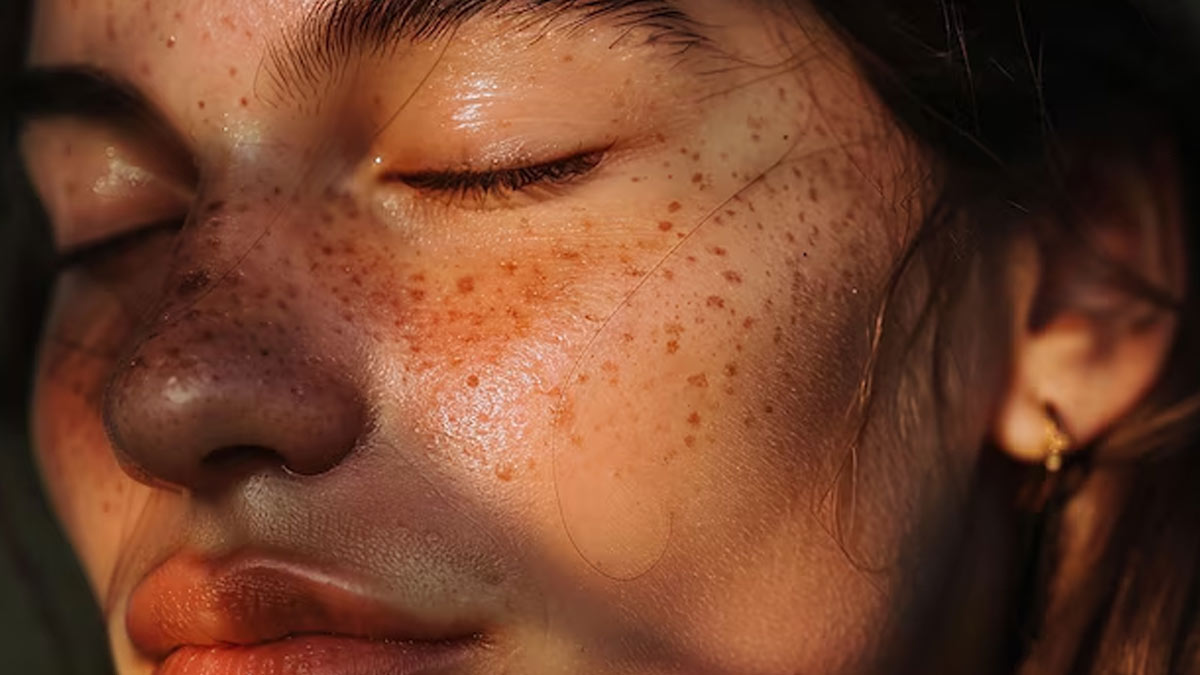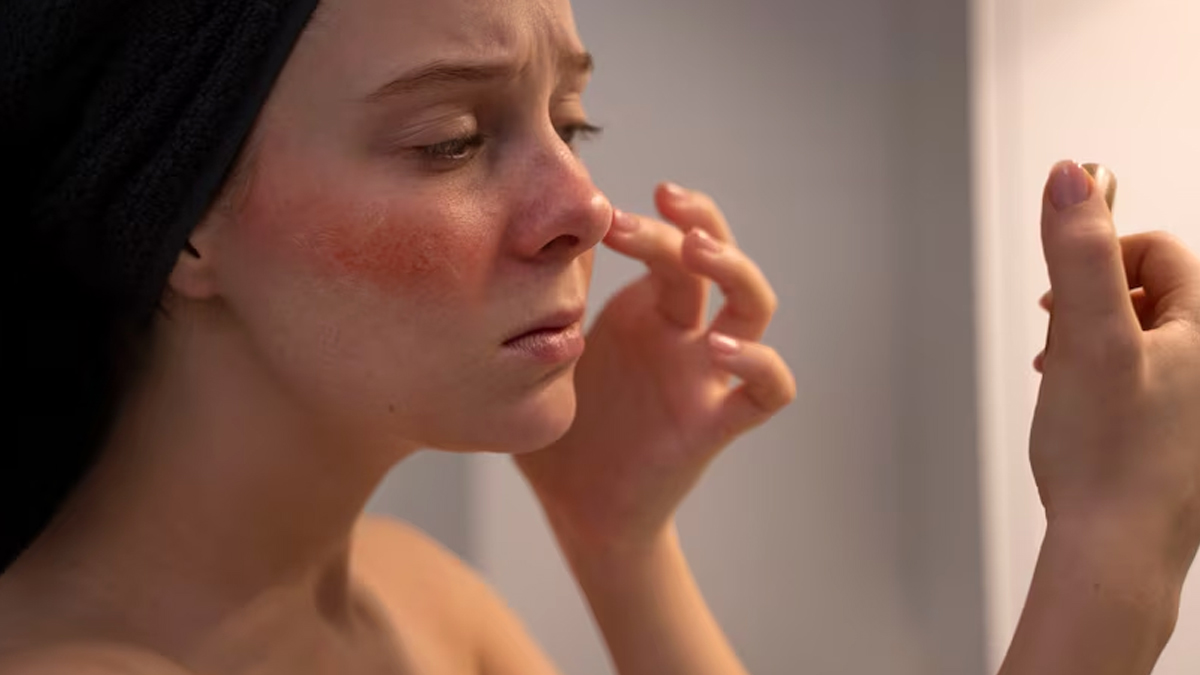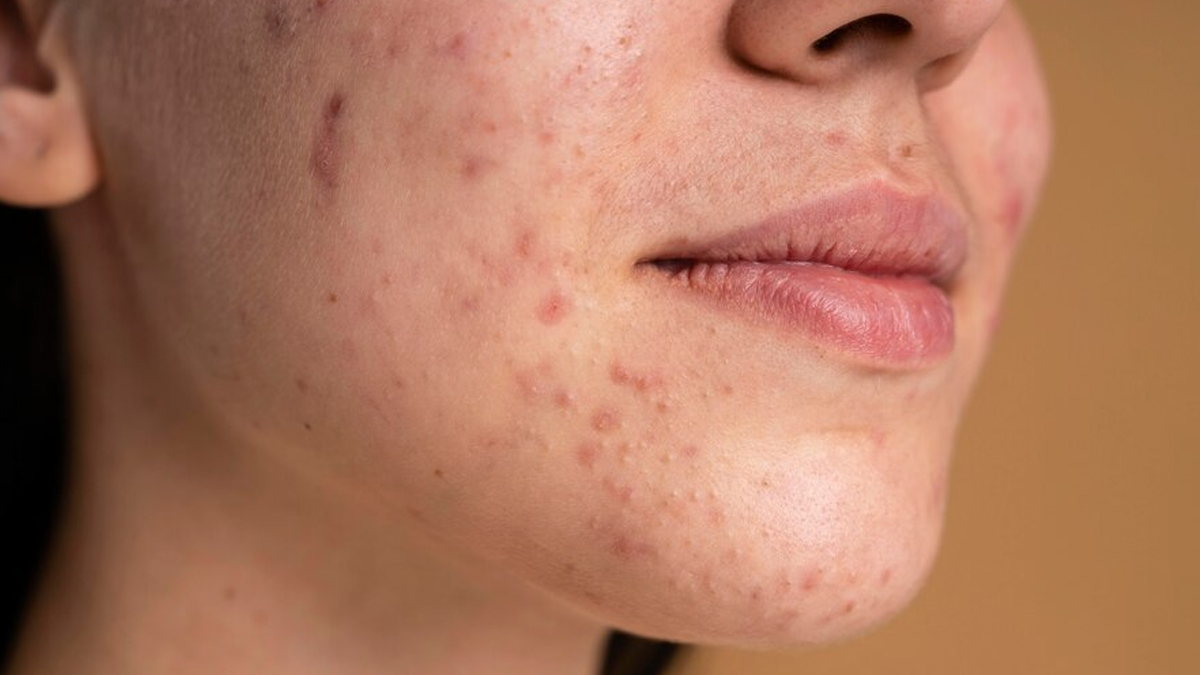
The internet is flooded with skincare advice, from "Get Ready With Me" videos and step-by-step routines to remedies for common skin issues like acne. But do these hacks, tips, and influencer-approved routines actually work for everyone? With the promises of glass skin, bizarre facials, and hair removal tricks, influencers have crowned themselves as skincare gurus. One such eyebrow-raising trend is "sunburning" your acne to get rid of it (while skin cancer quietly sobs in the background).
Table of Content:-
As the name implies, this skincare trend involves deliberately sunburning your skin with the aim of making acne vanish. The idea behind this trend is that exposing acne-prone skin to direct sunlight and UV rays can help reduce acne by drying out the skin. Instead of relying on topical creams containing salicylic acid or other proven acne-fighting ingredients, some TikTok users — influencers to be precise — are advocating for using UV rays to reduce their acne and breakouts. However, this method of getting rid of acne can be dangerous and comes with severe risks including skin cancer.
The Dangers of ‘Sunburning’ Acne
To understand why this trend can be harmful, OnlyMyHealth team interacted with Dr Shreya Dass Jain, Founder and Director, allSkin, Indore, and Consultant — dermatologist, Motherhood group of Hospitals, SRJ-CBCC Cancer Hospital, Apollo Hospital and DNS Hospital. Dr Jain strongly advises against this hazardous practice. “While the latest trend of 'sunburning' acne may seem appealing on social media, it's crucial to understand the risks involved,” she warns, adding, “Exposing acne-prone skin to UV rays can exacerbate the problem by causing increased inflammation, scarring, and long-term damage such as premature ageing or hyperpigmentation.”

The ultraviolet (UV) rays from the sun can damage the skin’s outer layer, leading to inflammation and irritation. This is particularly harmful to those with acne, as it can worsen breakouts, increase redness, and contribute to painful flare-ups. Furthermore, sun exposure can trigger post-inflammatory hyperpigmentation, making acne scars darker and more noticeable.
Also read: Sunburn Vs. Sun Poisoning: How To Distinguish Between The Two?
A study published in the Journal of the American Academy of Dermatology found that while sunlight has an initial drying effect on the skin, it ultimately leads to increased oil production as the skin tries to compensate for the loss of moisture. This rebound effect can lead to more severe acne in the long run.
Moreover, another study emphasised that prolonged sun exposure could weaken the skin’s natural barrier, making it more susceptible to environmental damage and infections. This, combined with UV-induced inflammation, can aggravate acne rather than alleviate it.
Advanced Treatments Over Sun Exposure

Instead of resorting to harmful practices like sunburning, Dr Jain suggests considering advanced dermatological treatments that are both safe and effective. One such option is bio remodelling, commonly known as Profhilo, which can be particularly beneficial for skin recovery post-acne.
“Profhilo isn't a direct treatment for acne, but it plays a crucial role in skin recovery and rejuvenation post-acne,” says Dr Jain. “This non-invasive treatment uses ultrapure hyaluronic acid to deeply hydrate the skin, improve elasticity, and stimulate collagen production, which can help in reducing the appearance of acne scars and preventing early signs of ageing. Profhilo promotes overall skin health, helping to restore your skin’s natural glow and resilience without the dangers of sun exposure.”
Profhilo works by infusing the skin with hyaluronic acid, which not only hydrates but also stimulates collagen and elastin production, essential components for maintaining youthful and healthy skin. Unlike traditional fillers, Profhilo spreads evenly under the skin, improving its overall texture and tone without adding volume.
Also read: Mint Leaves Magic: Ways To Use Mint Leaves For Acne And Scars
A Word of Caution
While Profhilo and similar treatments offer promising results, Dr Jain emphasises the importance of consulting with a skincare professional before trying any new trend or treatment. “Always consult with a skincare professional before trying new trends,” she advises. “What works for one person may not work for another, and some methods can be downright harmful.”
Conclusion
The allure of quick fixes like ‘sunburning’ acne might be tempting, especially when popularised by influencers. However, the risks far outweigh any perceived benefits. Protect your skin by avoiding harmful sun exposure and opt for proven, dermatologist-approved treatments that nurture and heal your skin without causing further damage. Your skin deserves care, not a sunburn.
Also watch this video
How we keep this article up to date:
We work with experts and keep a close eye on the latest in health and wellness. Whenever there is a new research or helpful information, we update our articles with accurate and useful advice.
Current Version